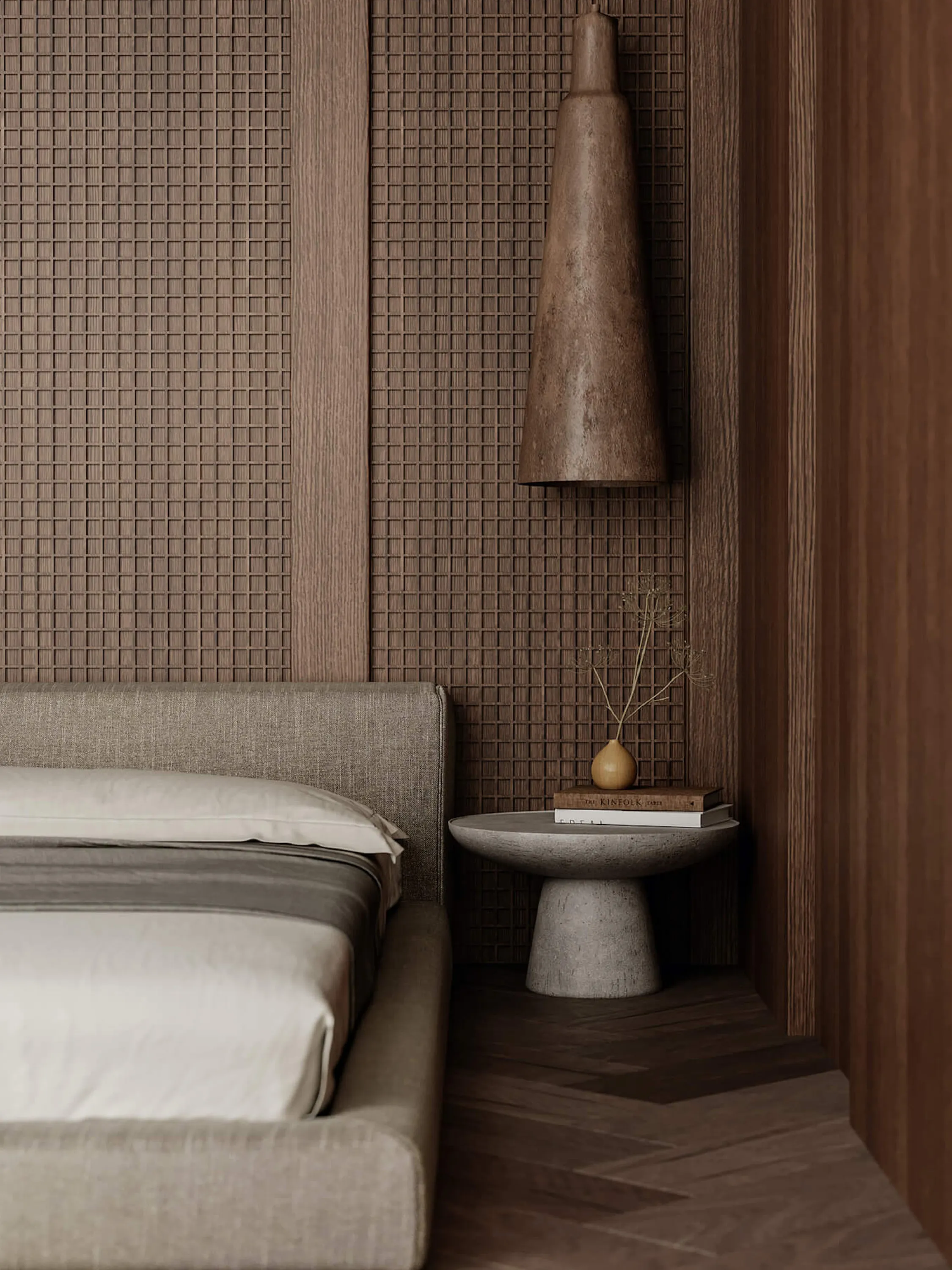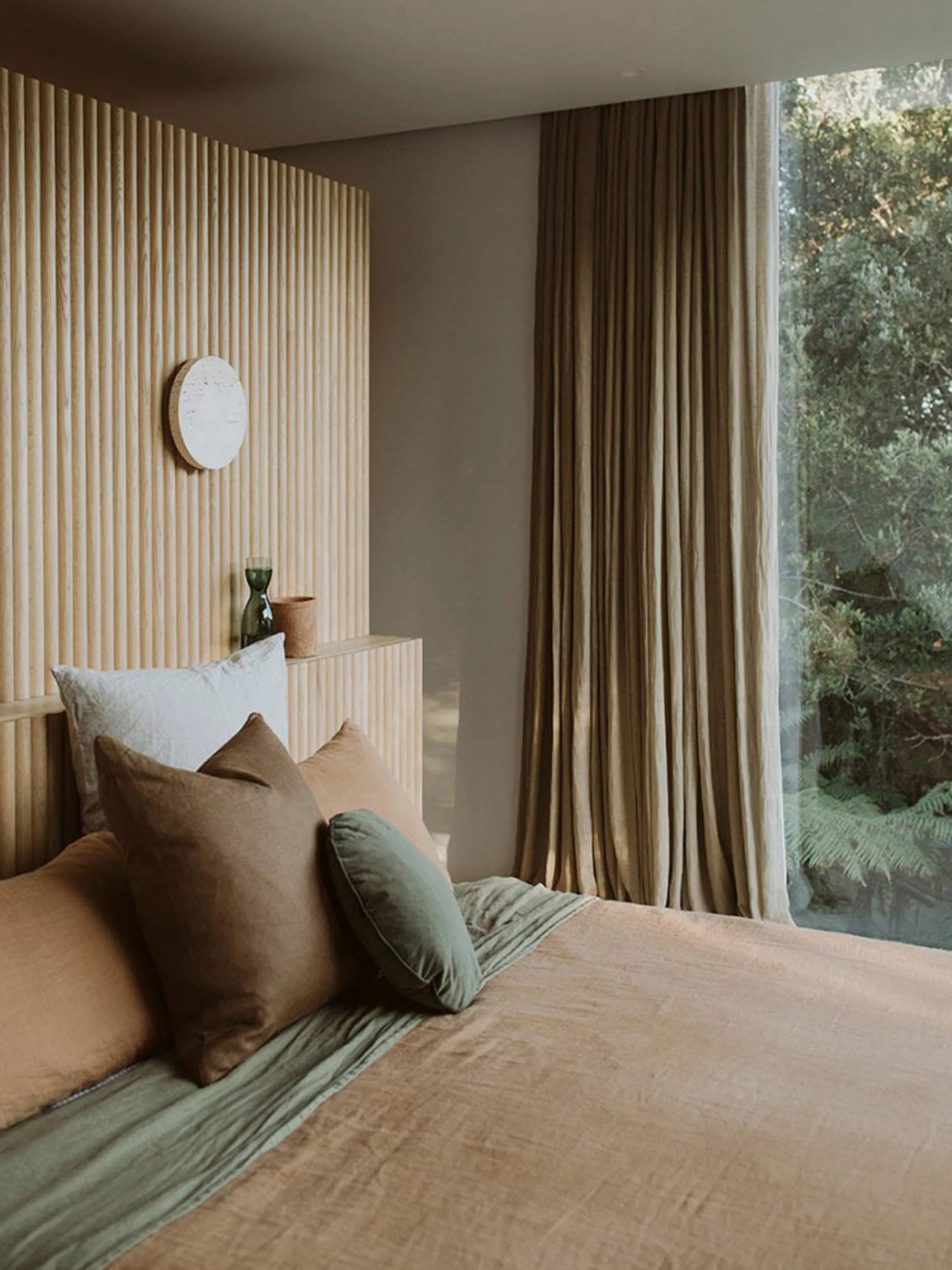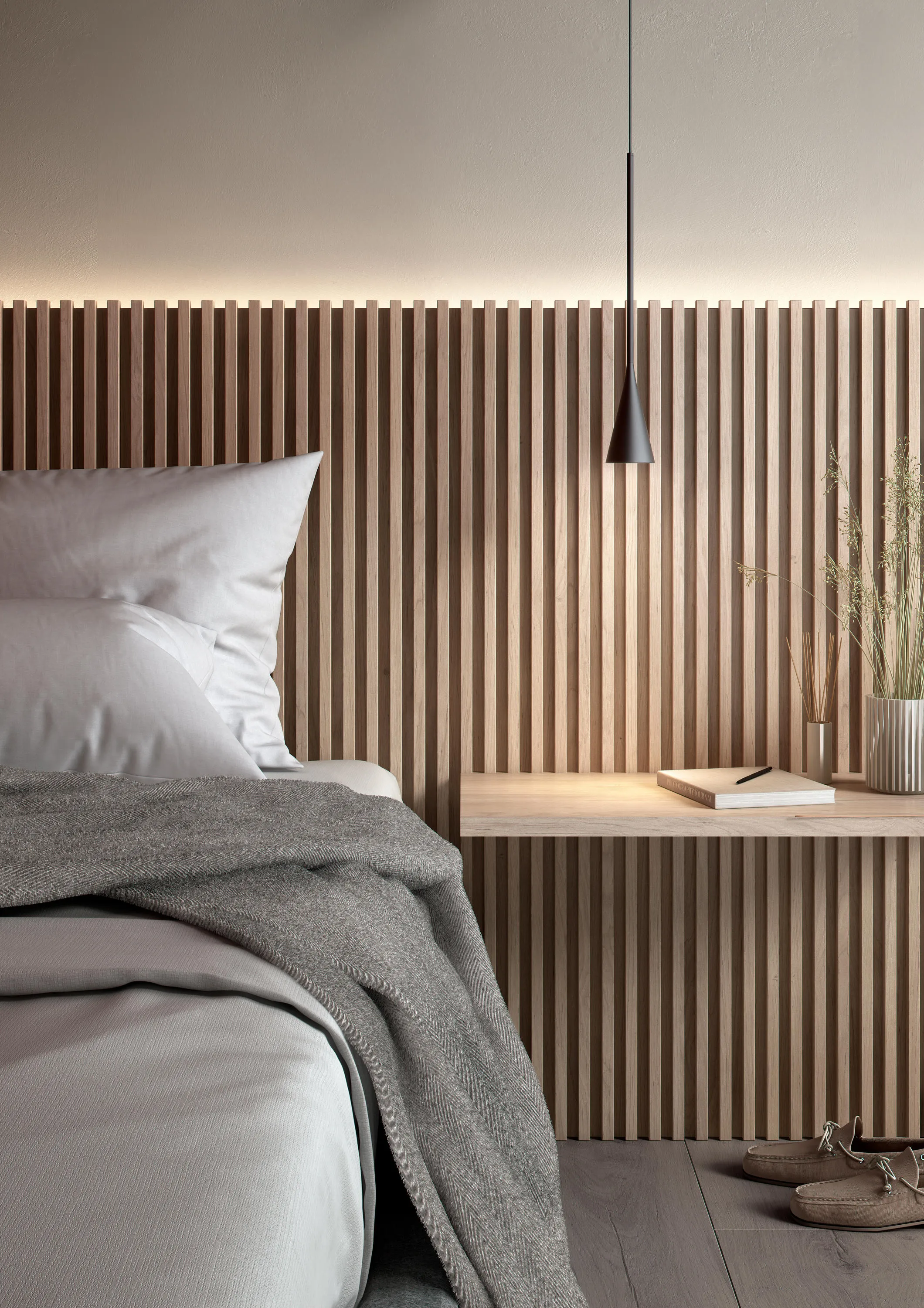Biophilic design room-by-room: the bedroom
Being devoted to sleep, the bedroom is a particularly important room in the home. An intentionally soothing design sets the desired calming atmosphere, a premise for a recharging night.
This episode of Biophilic Room-by-Room looks into the essence and the design of bedrooms from a biophilic perspective…
Supporting rest
Quality sleep is crucial for human health. It is a deeply healing appointment that regenerates body and mind.
To support this daily restoration work, bedrooms call for calming design choices in all aspects: shapes, colours, textures, light, and more. From a use of space perspective, bedrooms should be devoted to rest, hosting only soothing activities if any besides sleep.

Designing a biophilic bedroom
In bedrooms, everything should be an invitation to unwind. Soft textures, comforting shapes, and soothing colours all contribute to crafting a refuge atmosphere.
Light requires particular attention. The circadian rhythm – human day-night clock – is regulated by natural light. As the evening comes, an increasingly warm and soft light tells the brain that it’s time to slow down.



If home is a refuge from the outside world, the bedroom is a refuge from daytime altogether. A soothing space makes the atmosphere deeply restorative, honouring the importance of rest through a nourishing design.
Further resources:
Available in the shop, anooi’s publications explore the nuances of a biophilic ethos, highlight anooi’s perspective on the topic, and cover the studio’s ongoing research in biophilic thinking and design.